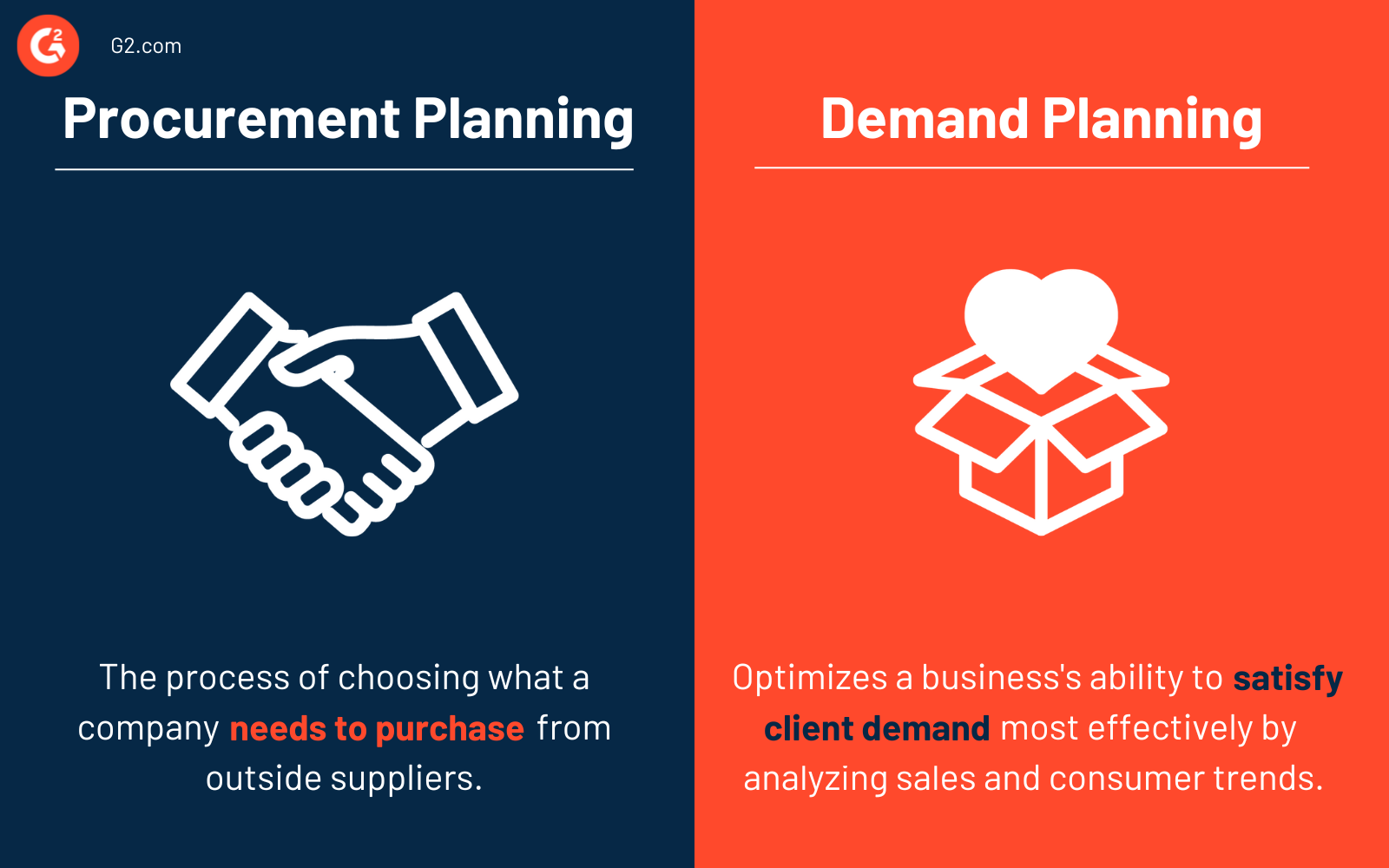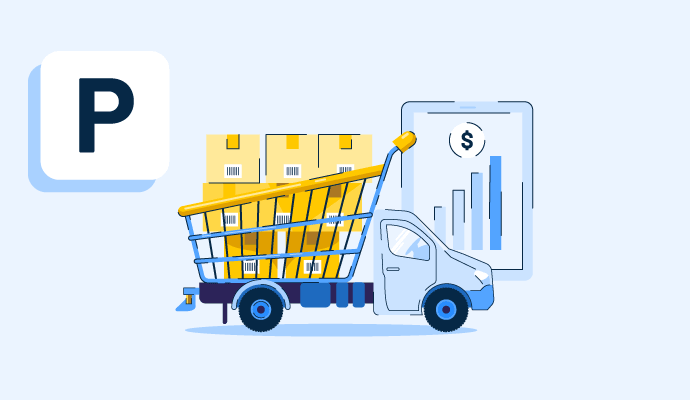What is procurement planning?
Procurement planning refers to determining, evaluating, and choosing the goods a company needs to purchase from outside suppliers. The procurement process involves various tasks, from determining the demand for a good or service to its delivery and payment. Procurement planning is a crucial component of this process.
Many organizations use demand planning software to foresee future demands and manage inventory accordingly. Planning for purchases ensures a company has the resources to run effectively. Companies can create an organized strategy to acquire products and services while reducing risks and expenses.
Types of procurement plans
Organizations use various procurement plans to control their purchasing activities. The specific procurement strategy employed depends on the goals and demands of the company. Below are a few common types of procurement plans.
- Consolidated procurement plans detail an organization's purchasing requirements for a given time frame. It combines the procurement strategies of many departments and business units.
- Individual procurement plans outline the purchasing requirements of an organization's particular department or business unit. It’s a thorough plan that specifies the precise goods, services, and tasks that the division must obtain over a certain time frame.
- Project procurement plans contain information about procurement categories, procedures, timetables, budgets, supplier lists, and risks.
- Emergency procurement plans define the requirements for purchasing in the event of a crisis. It includes all the categories, techniques, timetables, and capital for urgent procurement tasks.
- Strategic procurement plans comprise a company’s long-term procurement goals and tactics. It examines the procurement requirements, the market state, and the opportunities and dangers of procurement activities.
- Annual procurement plans describe the organization's purchasing requirements for a certain fiscal year. It includes categories, procedures, deadlines, budgets, and supplier lists.
Benefits of procurement planning
Procurement planning helps organizations achieve their procurement objectives and enhance overall operations. Some of the benefits that procurement planning offers are:
- Cost savings. Organizations save money by locating affordable suppliers and negotiating advantageous contracts.
- Risk management. Businesses use proper procurement planning to manage the dangers associated with procurement, such as vendor failure, quality problems, and supply chain interruptions. Organizations can reduce potential risks by identifying and creating measures to mitigate them.
- Improved supplier connections. Enterprises develop stronger relations with suppliers by finding vendors who align with their requirements and goals. Strong supplier connections help businesses increase the efficiency and dependability of their supply chains, benefiting all operations.
- Efficiency gain. Organizations increase efficiency by optimizing procurement procedures and reducing cycle times and waste.
- Better quality. Companies ensure the goods and services they procure comply with their quality standards. It lowers the risk of quality issues and leads to long-term contracts.
- Enhanced decision-making. Businesses improve their decision-making processes by researching market trends and spotting potential threats or opportunities. It helps create procurement strategies in-line with company objectives.
Procurement planning process
A structured and thorough process makes procurement efficient. Here are some standard steps in the process.
- Identify the organization's procurement needs. Analyzing a company's current procurement procedures, finding potential improvement areas, and figuring out the precise supplies, services, or projects helps teams perform necessary procurement groundwork.
- Create procurement objectives. Prioritize the most crucial procurement tasks and align them with the organization's objectives.
- Determine procurement method. Choose a procurement technique based on the company’s objectives. It can include competitive bidding, request for bids, or direct contracts.
- Make a procurement timeline. Include evaluation, contract negotiation, and delivery. The timeline should sync with the organization's calendar.
- Plan a budget for purchases. The purchase budget should consider all expenditures related to the procurement activities, such as procurement fees or transportation charges.
- Determine potential suppliers. Carry out market research, find possible suppliers, and assess their skills and credentials.
- Figure out assessment criteria. Assess potential suppliers based on their credentials and experience. The criteria are based on the procurement objectives.
- Conduct procurement activities. Advertise the procurement opportunity, get bids from possible suppliers, evaluate their bids, negotiate contracts, and get the resources.
- Monitor and assess procurement activities. Track the procurement activities, evaluate supplier performance, and pinpoint areas where the procurement processes can improve.
Procurement planning vs. demand planning
Procurement planning is sometimes confused with demand planning, but the two are different.

Procurement planning is the process of choosing what a company needs to purchase from outside suppliers. The plan outlines how to choose a vendor, determine a project’s needs, conclude a contract, and get supplies.
Demand planning optimizes a business's ability to satisfy client demand most effectively. It analyzes sales as well as consumer trends, historical sales, and seasonality data. Demand planning integrates sales forecasting, supply chain, and inventory management to reach its objective.
Demand planning forecasts future demand using information from internal and external sources. To plan how much to acquire or create to meet that demand, companies can use the forecast to guide the sales and operations strategy.
Learn more about demand planning and understand how to meet future needs using old data.

Sagar Joshi
Sagar Joshi is a former content marketing specialist at G2 in India. He is an engineer with a keen interest in data analytics and cybersecurity. He writes about topics related to them. You can find him reading books, learning a new language, or playing pool in his free time.

